
Introducing The MB&F HM11 ‘Architect’
Launched just before Dubai Watch Week, The HM11 “Architect” trades the brand’s trademark automotive inspiration for a futuristic architecture based on “bubble houses” from the 1960s — a horological house that most definitely feels like a home
Following the conclusion of the 5-day Emirati extravaganza officially known as Dubai Watch Week, it speaks volumes that MB&F’s latest release still remains front-and-center in the chatter amongst attendees.
24 hours before the fair even began, Max Büsser and his cohort of mad horological geniuses launched the HM11: the newest member of the Horological Machine family, also aptly referred to as the ‘Architect’.
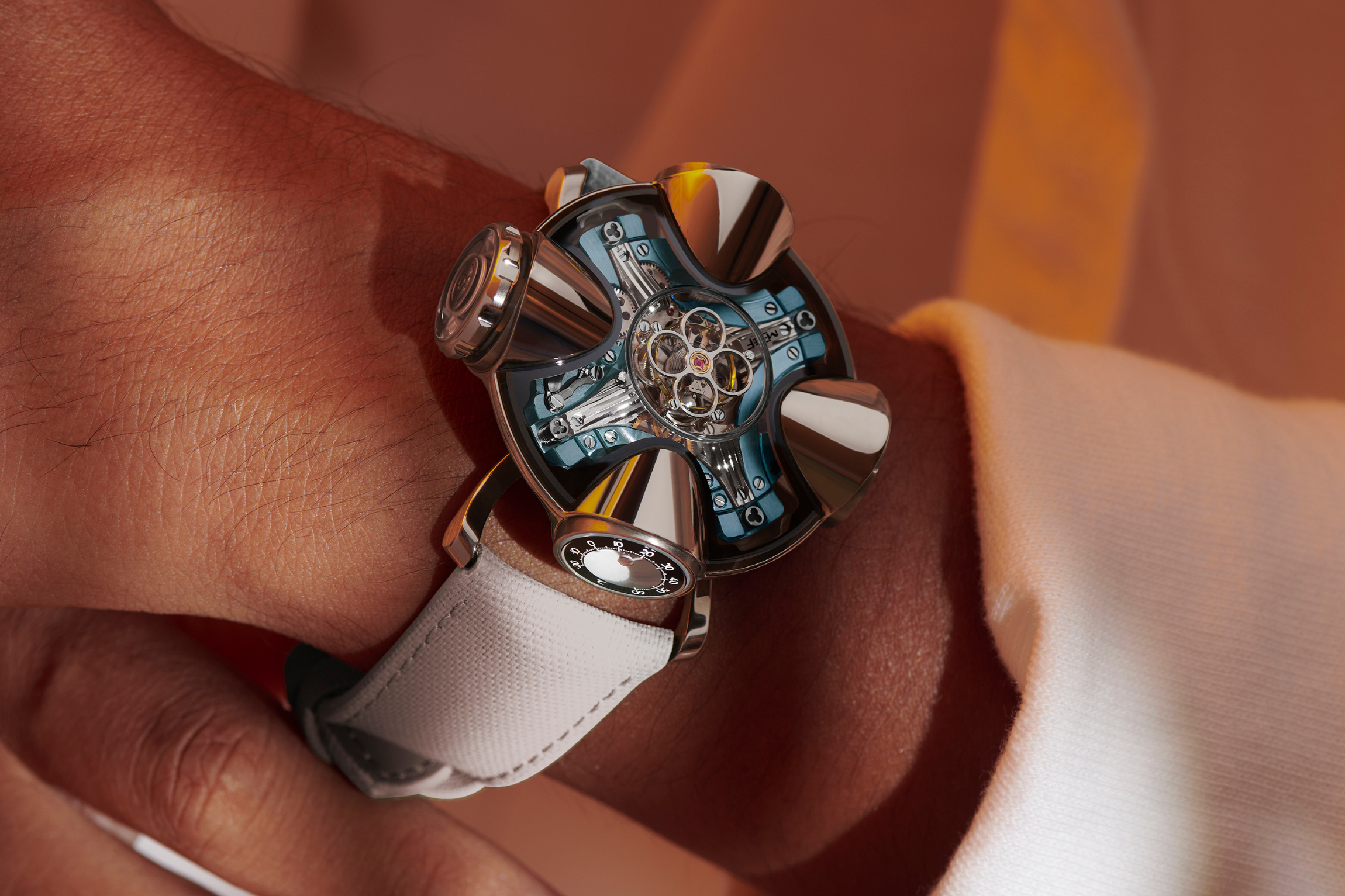
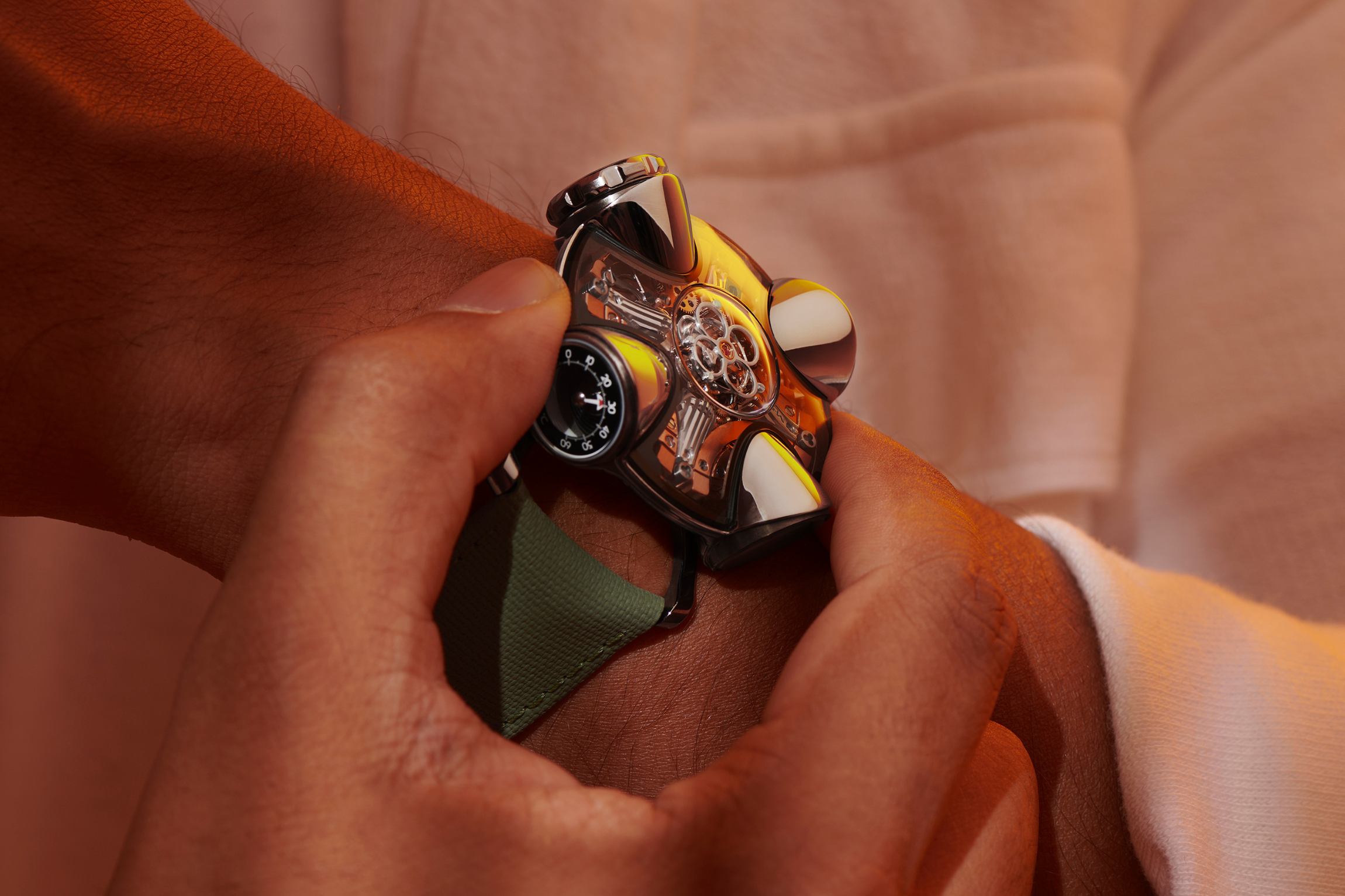
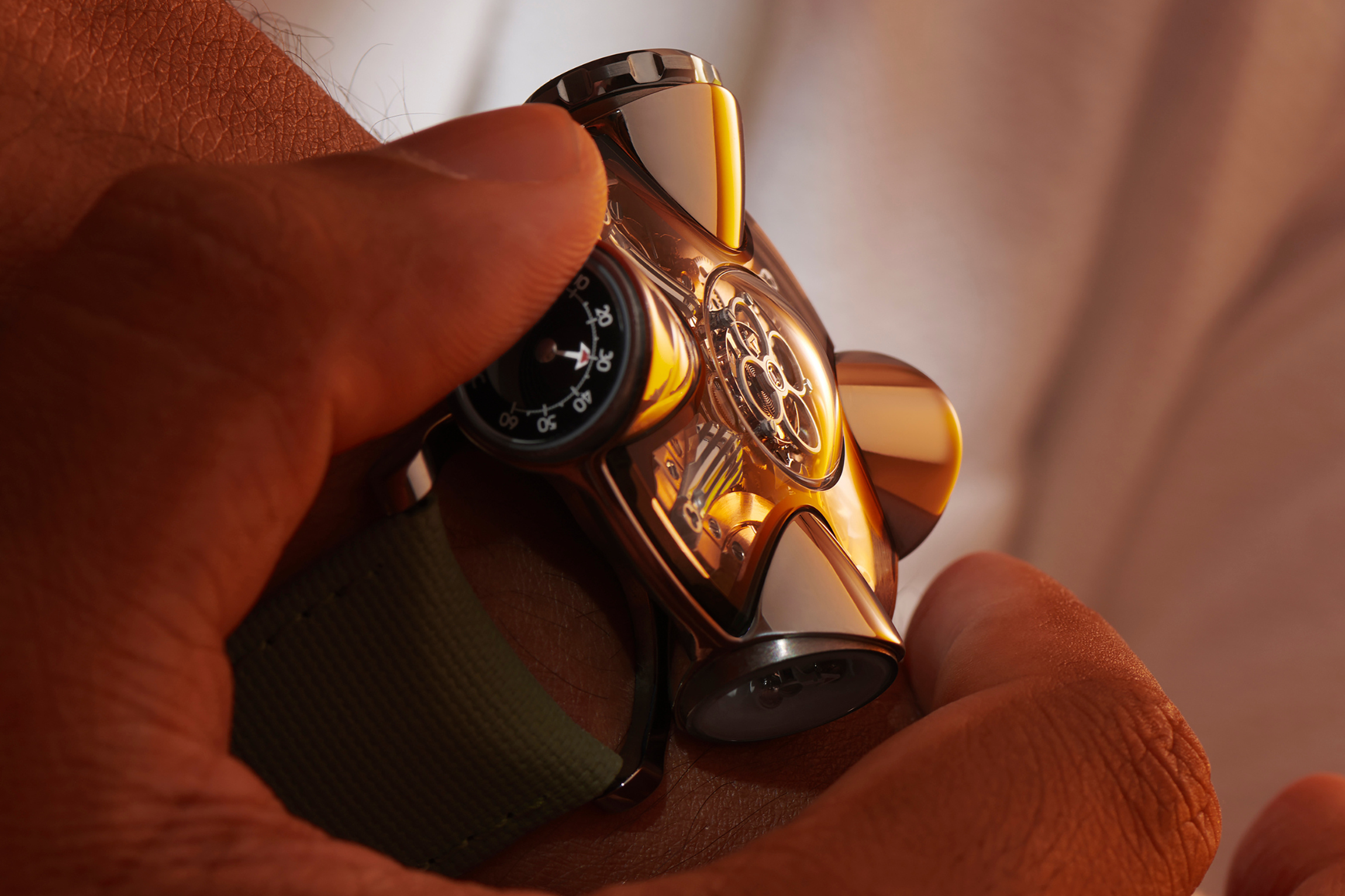
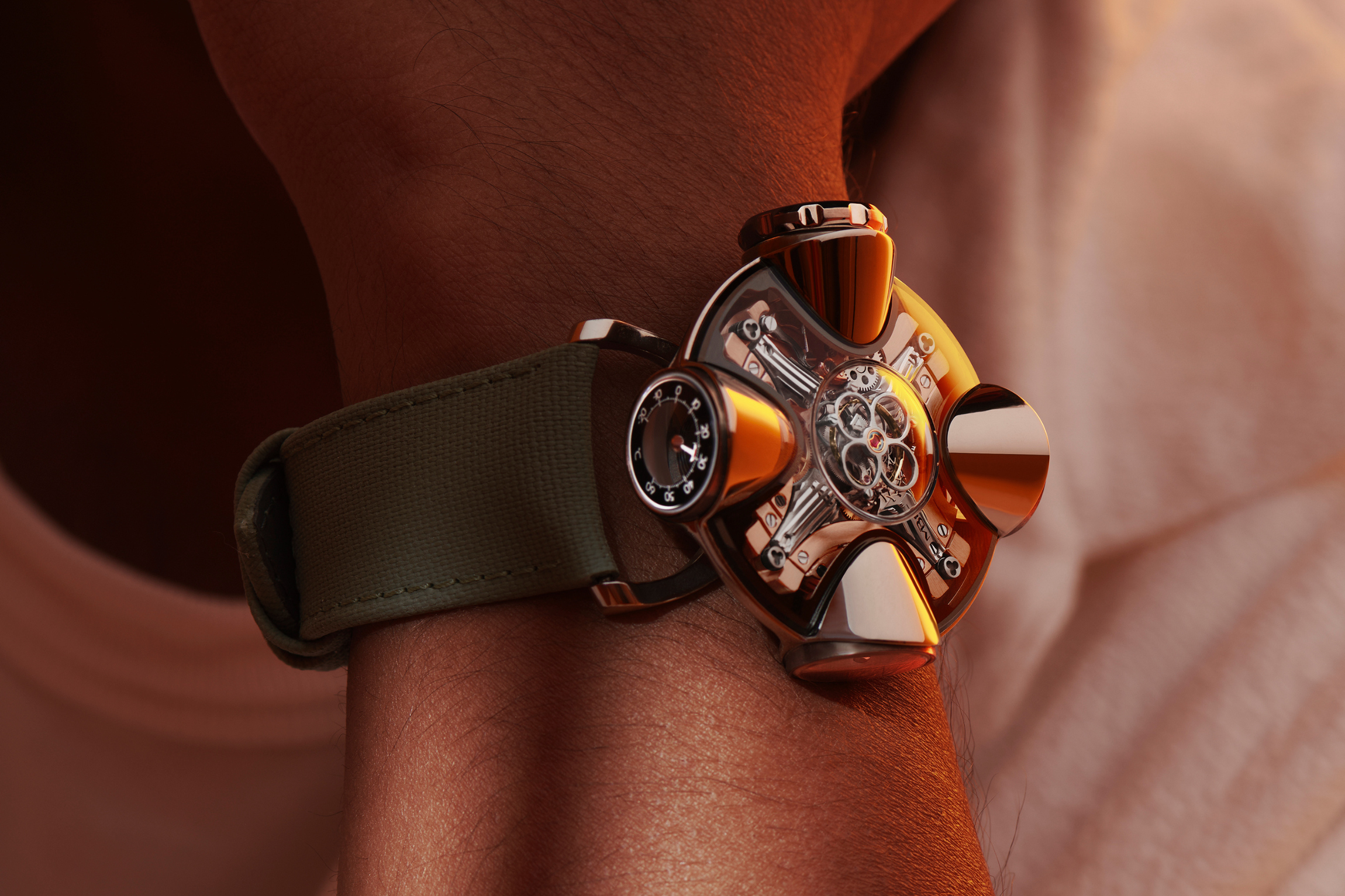
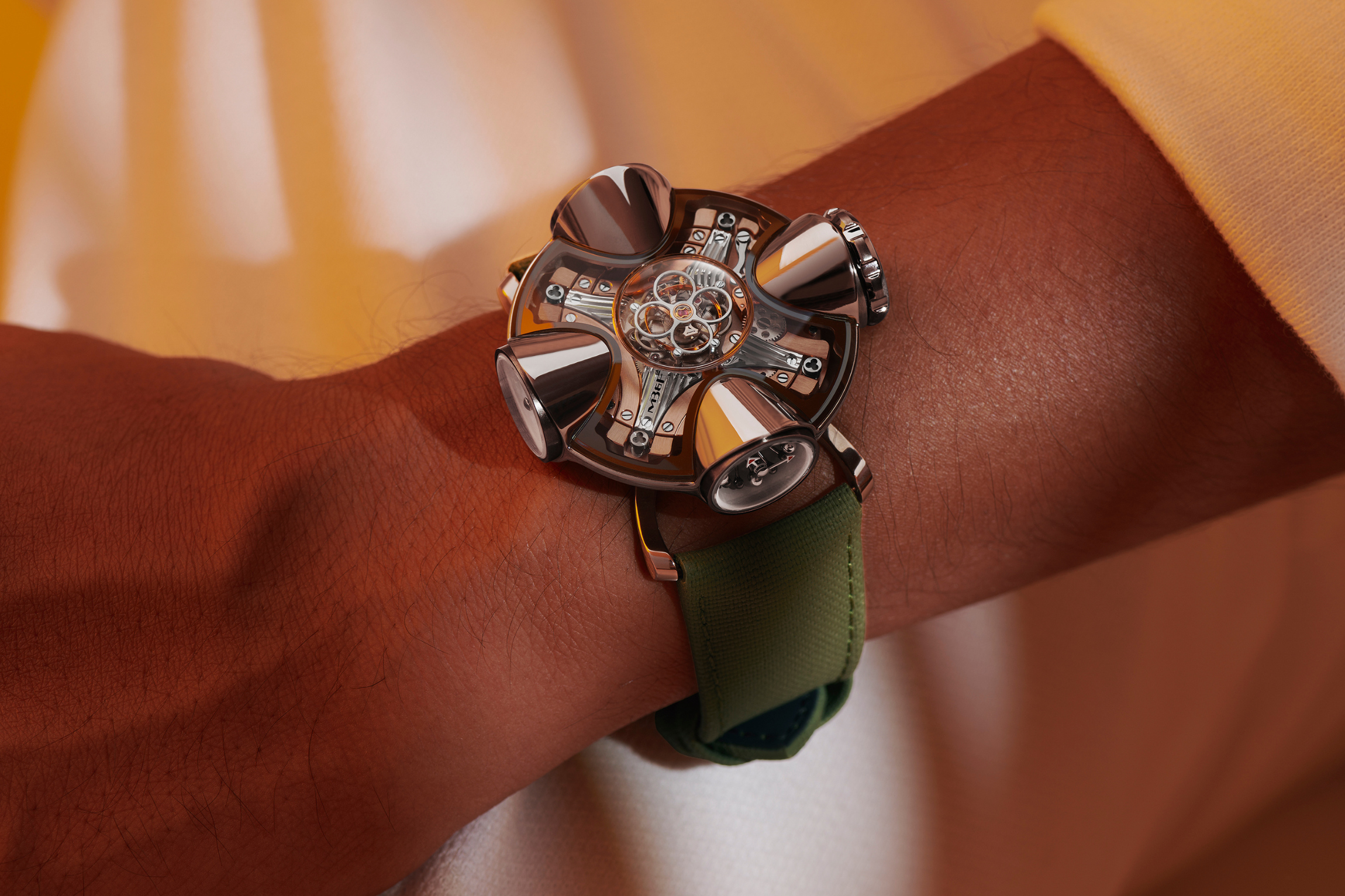
Similarly, the HM11 consists of an array of smaller ‘rooms’ anchored around a central node. These are all mounted on what appears to be an otherwise familiar foundation of titanium frame and lugs, contributing to the watch’s surprising wearability (more on that shortly).
As fans of MB&F’s previous designs will expect, the most visible highlight is the flying tourbillon. Arguably one of the brand’s most recognizable specialties, it’s secured to the movement’s cross-shaped mainplate with a series of circle fasteners, which also double as a rudimentary system for shock absorption.
Despite its architectural premise and the way that it challenges the mold of traditional watch designing, the emerging consensus around the HM11 appears to be that it wears fairly traditionally. The frame of the watch itself measures 42mm, which in relative terms, makes this no bigger than your common-variety dive watch.
What is more contentious however is the overall height. In line with other entries in the Horological Machine collection, the HM11 has a tendency to wear quite tall; with each of the watch’s ‘rooms’ measuring 23mm at their highest point.
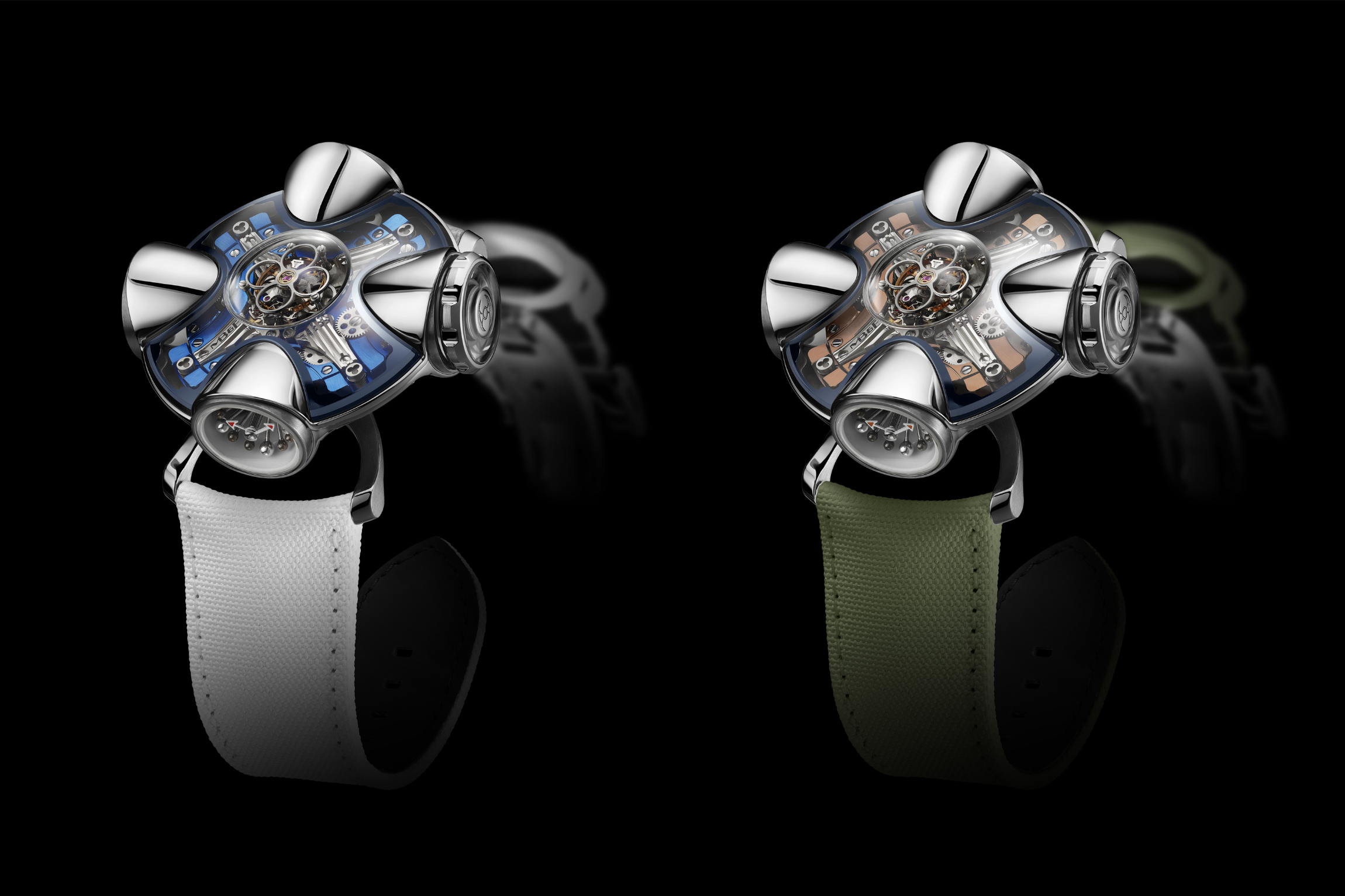
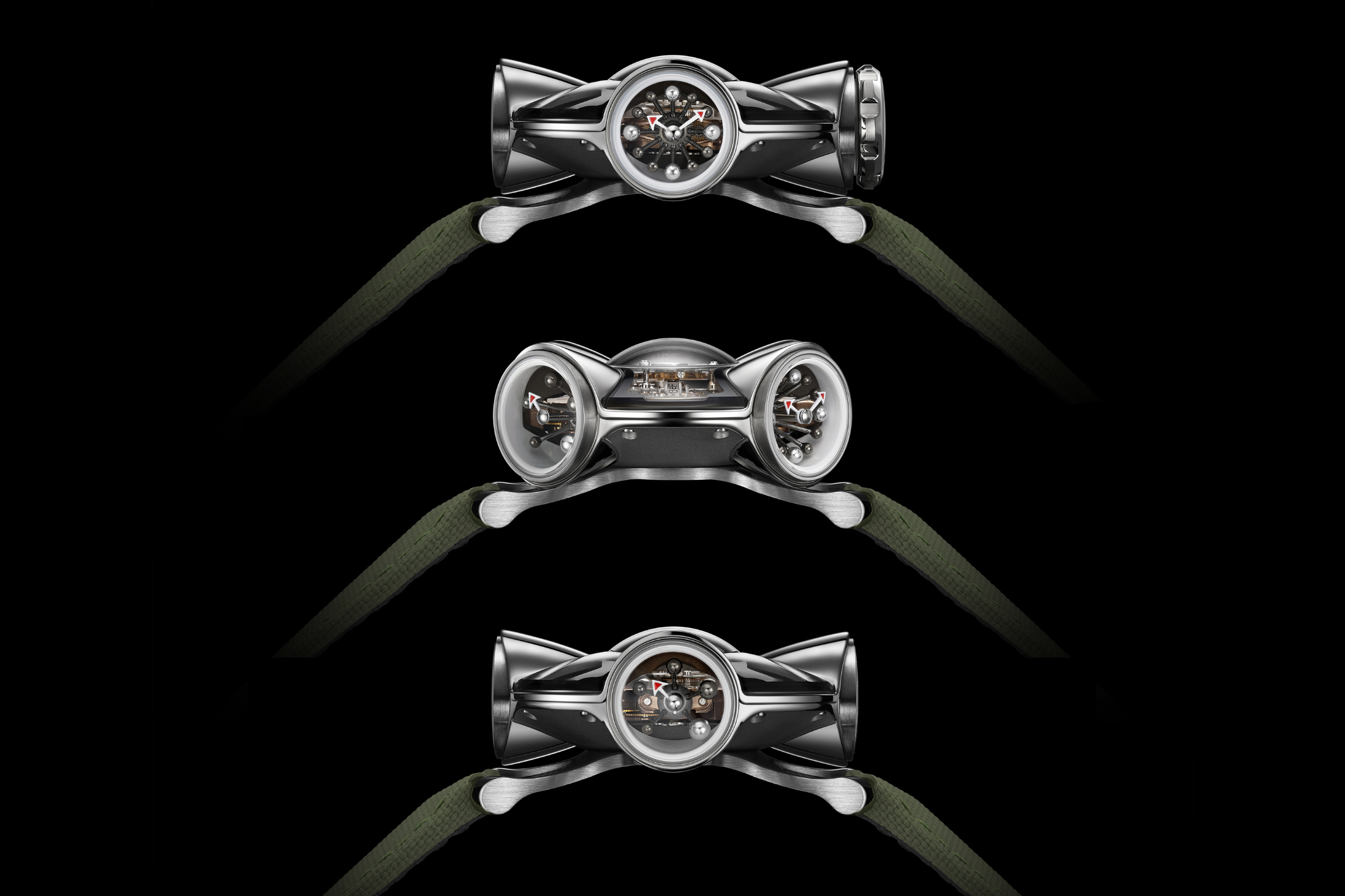
Much like the stereotypical nosy houseguest, snooping around the HM11’s nooks and crannies yields a variety of interesting discoveries. As previously mentioned, Büsser and his long-term partner-in-design Eric Giroud intended for the tourbillon to embody the ‘living room’ of this watch; and from here, you’re invited to explore four ancillary spaces that look a little like sci-fi escape pods.
Naturally, the first of these - and the one wearers are liable to spend the most time rotating to - tells the time. Visible at the case’s periphery, this room displays the time via a conical gear train and array of polished spheres. Taken together, these elements lend the time display the inimitable appearance of George Nelson’s ball clock: first created in 1947, and reissued by Vitra today.


‘Rooms’ 2 and 3 house the HM11’s power reserve indicator and thermometer respectively. The former visualizes how much energy remains in the movement’s 96-hour power supply in the guise of yet another ball clock; whereas the thermometer measures environmental temperatures up to a limit of 60℃/140℉. In particular, the technology underpinning the thermometer’s functionality is quite ingenious: a thermosensitive coil, not dissimilar in appearance to a hairspring, expands and contracts in line with the surrounding temperature.
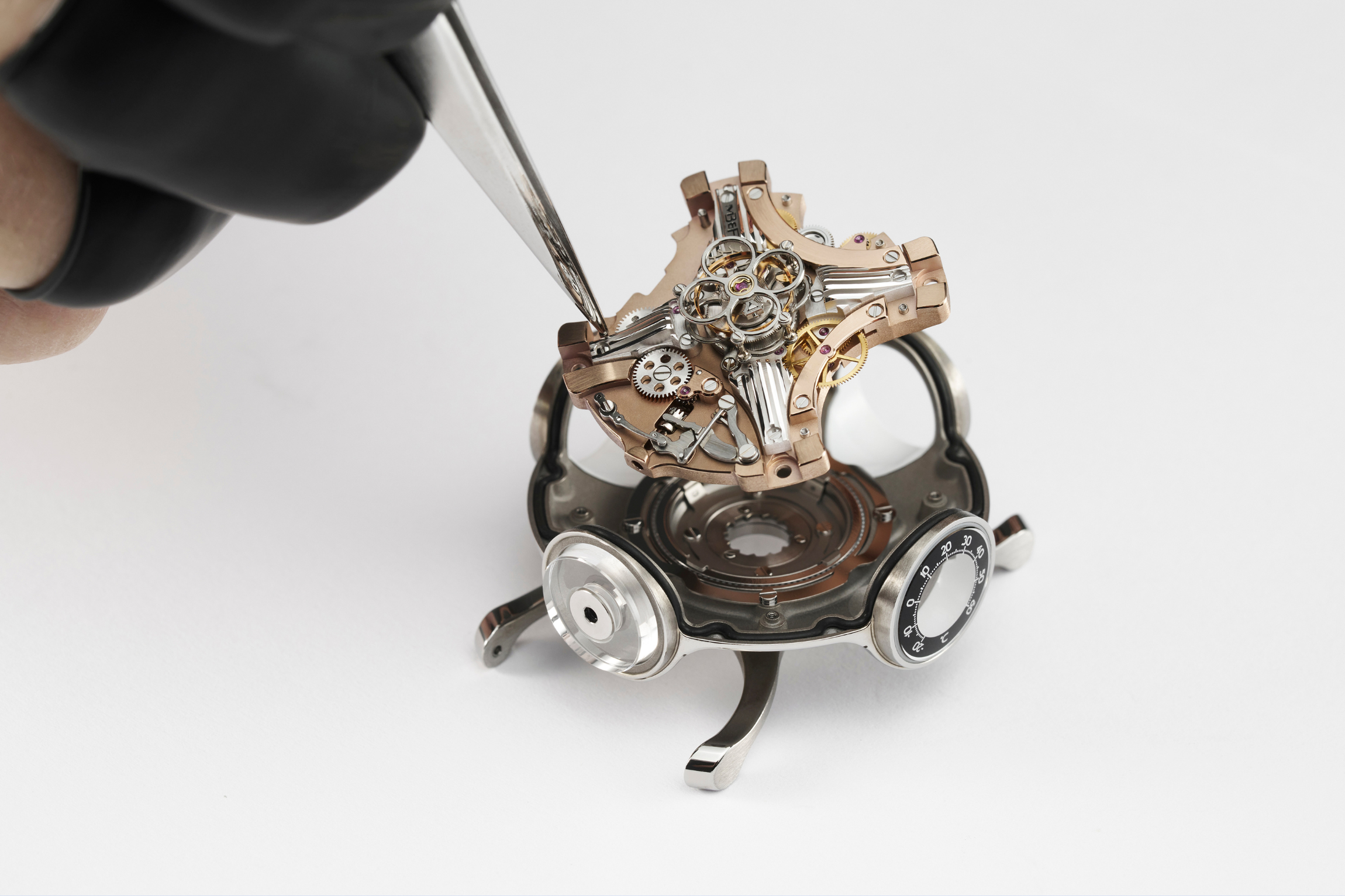
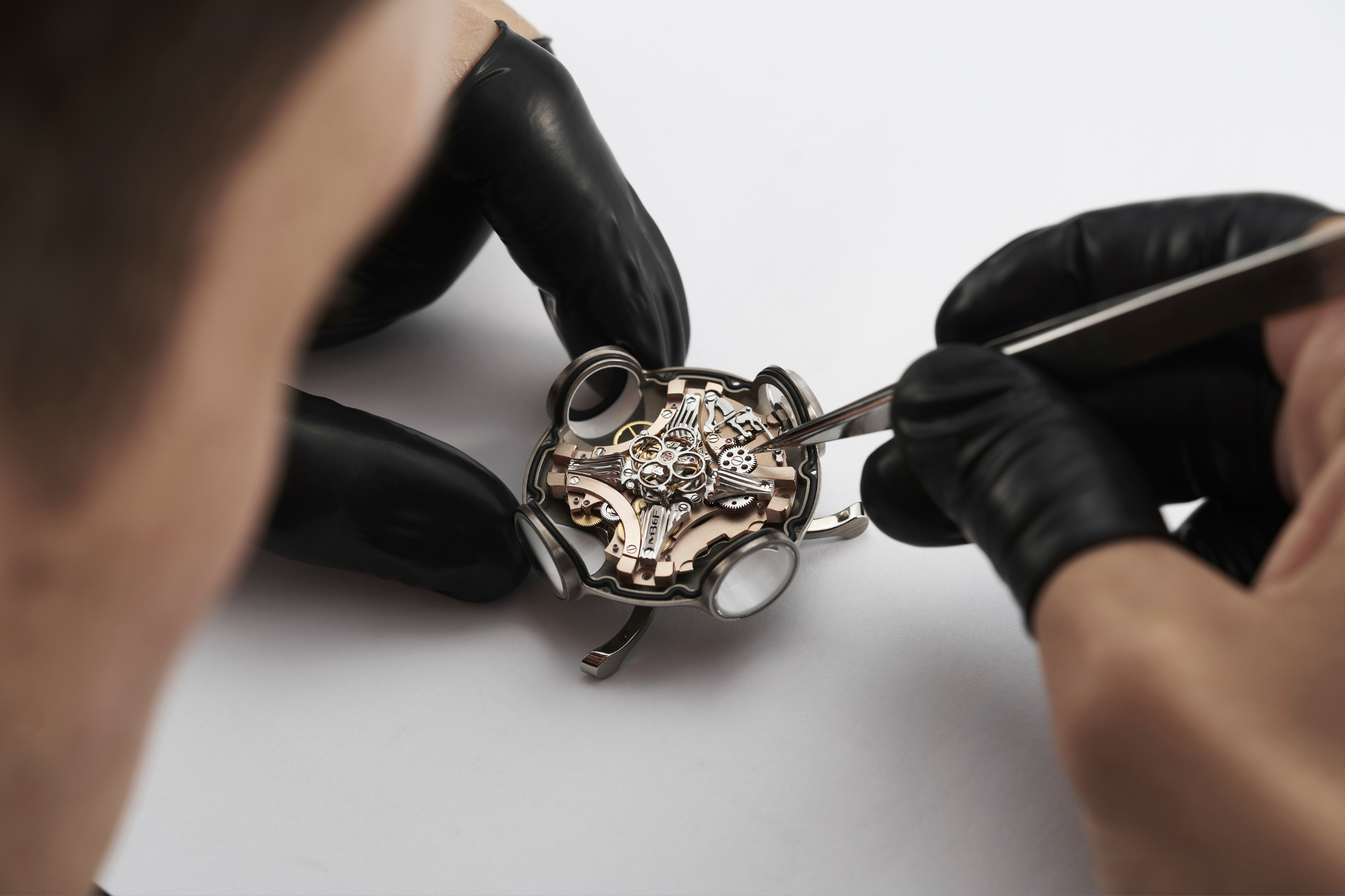
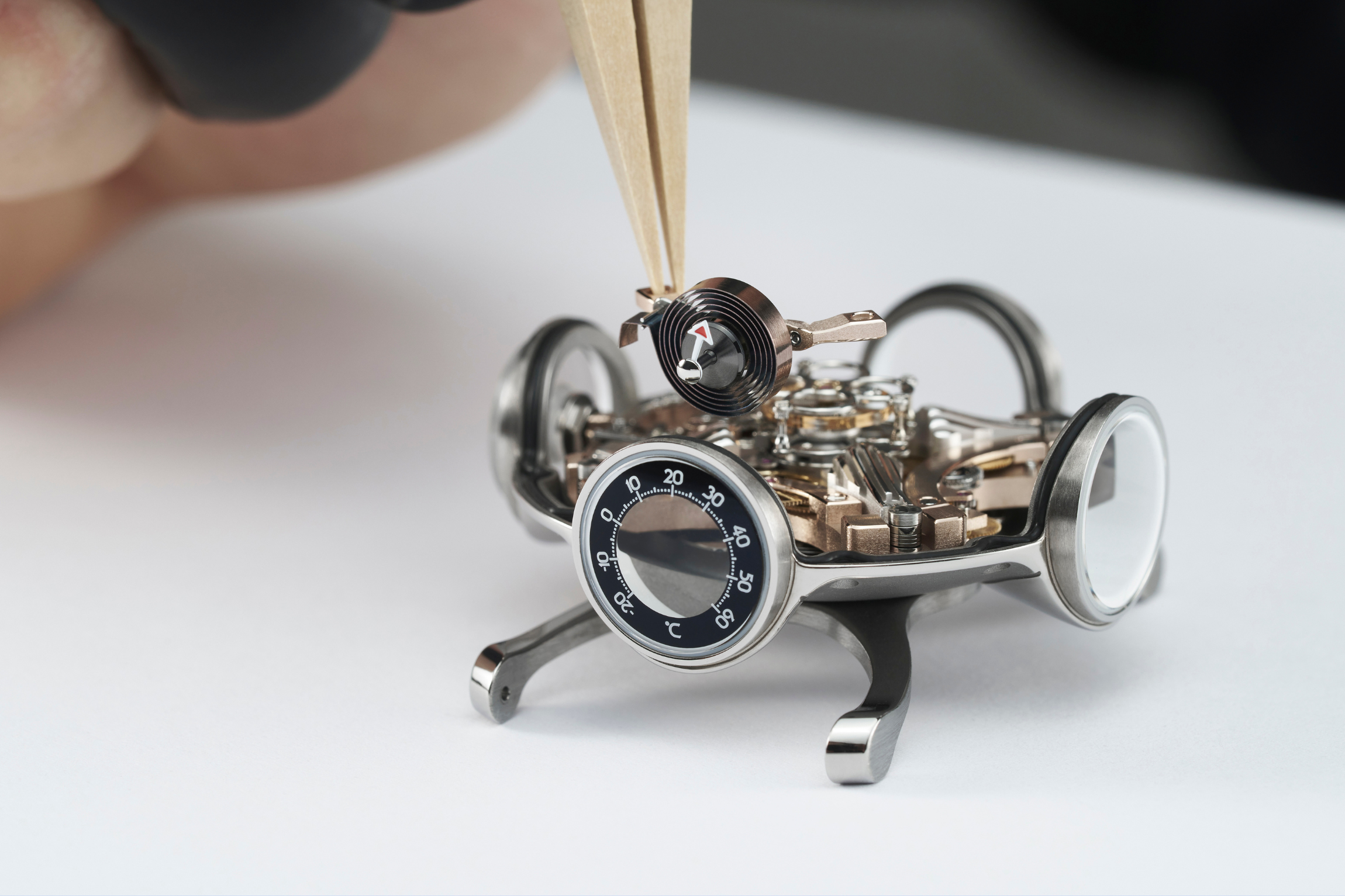
That brings us to the final room: what MB&F marketers have fondly taken to calling the HM11’s “front door”. Machined with an extra-large profile (so as to prevent a vacuum from forming inside the watch’s crystal) this essentially functions as the watch’s crown. That is, save for one major distinction: winding.
Instead, the ‘house’ itself - consisting of the four rooms and tourbillon - may be turned by the wearer unidirectionally, with each rotation programmed for 45°. One such incremental turn adds 72 minutes to the wearer’s total power reserve and is performed in a clockwise direction.

SPECIFICATIONS
HM11 ‘Architect’
Engine: Three-dimensional horological engine featuring bevel gears, composed of a flying tourbillon, hours and minutes, a power reserve indicator and temperature measurement, developed in-house by MB&F.
Movement: Mechanical manual winding (by turning the entire case clockwise).
Power reserve: 96 hours
Balance frequency: 18’000bph/2.5Hz
Plates: Blue and 5N PVD treatment
Number of movement components: 364 components
Number of jewels: 29 jewels
Functions: Hour and minutes, Power reserve, Temperature (-20 to 60° Celsius, or 0 to 140° Fahrenheit)
Case: Grade 5 titanium
Display markers: Conical rods in stainless steel (Ø 0.50mm to 0.60mm), darker beads in polished titanium and lighter beads in polished aluminium (Ø 1.30mm to 2.40mm).
Dimensions: 42mm diameter x 23mm height
Number of case components: 92 components
Water resistance: 20m / 68’ / 2ATM
Sapphire crystals: Sapphire crystals on top, back, and on each chamber-display treated with anti-reflective coating on both faces, Sapphire crown
Strap & Buckle: Rubber strap – white for the blue model and khaki green for the red gold model, Titanium folding buckle.
HM11 ‘Architect’ titanium with blue dial plate limited to 25 pieces; in titanium with red gold dial plate limited to 25 pieces.
